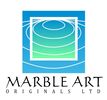Frequently asked questions: |
|
|
Is it an oil-based marbling paint?
Can you use any fabric to do marbling ?
Do you treat the fabric with anything?
Do you need to treat paper, tiles, cork, leather, pottery, etc.?
Do you have to iron the fabric?
Can you wash the fabric?
How many prints can you get with the full kit?
How do you print large prints?
What is the paint floating on?
How long does the floater liquid last once mixed?
How do you dilute the paint?
Will the paint stain clothes?
How do you mix the floater? Only refer to the Floater pot for instructions. Pot of floater powder with blue spoon provided- (Use a slightly heaped BLUE SPOON per 1 litre of HOT TAP water ) (Floater Powder 3.5g / slightly heaped blue spoon)
Can dissolved alum be kept? How should this be stored and for how long?
Why should fabric not be ironed before it’s printed onto? Why is this?
|
What paper is good to marble?
How to reminders: (VIDEO)
All the solutions and reasons to the above reminders are covered in the instructions at the bottom RHS provided in the Marbling 4 Fun kit. In my 30+ years experience, almost every angle has been covered and hence being placed into the instructions for your benefit. This is an ancient craft and is very forgiving. Like anything creative, with practise, comes perfection, and perfection is a unique masterpiece neither wrong nor right. It is a work of art. My advice, enjoy the process and have fun! Craig Joubert. |








